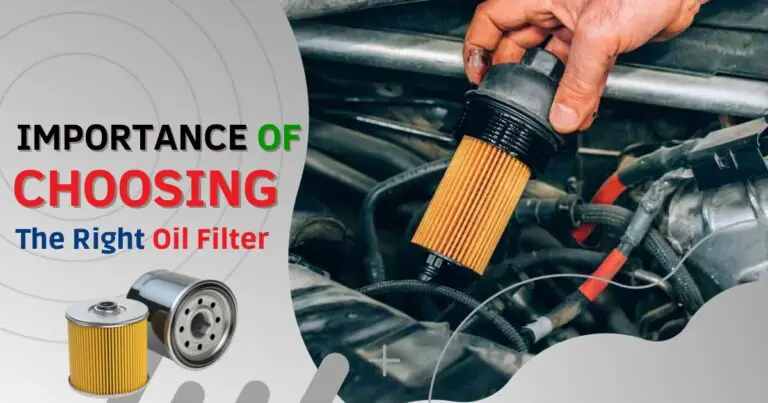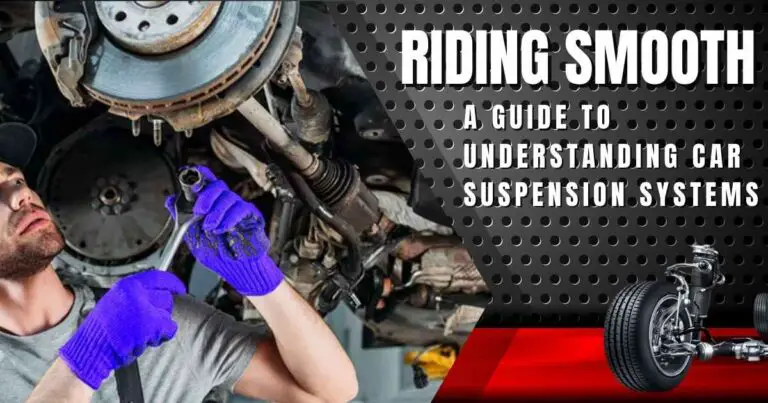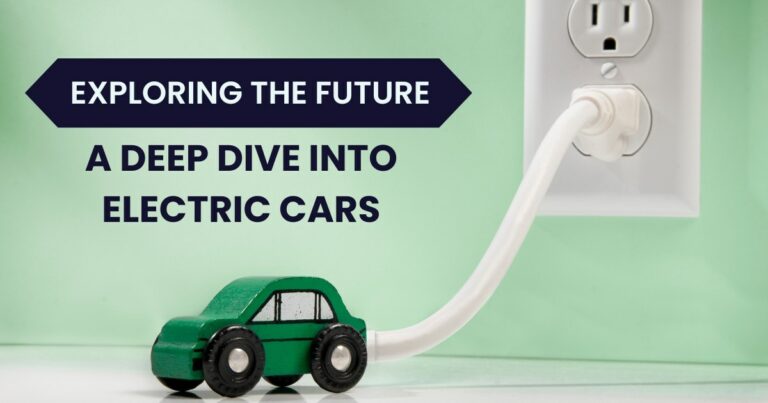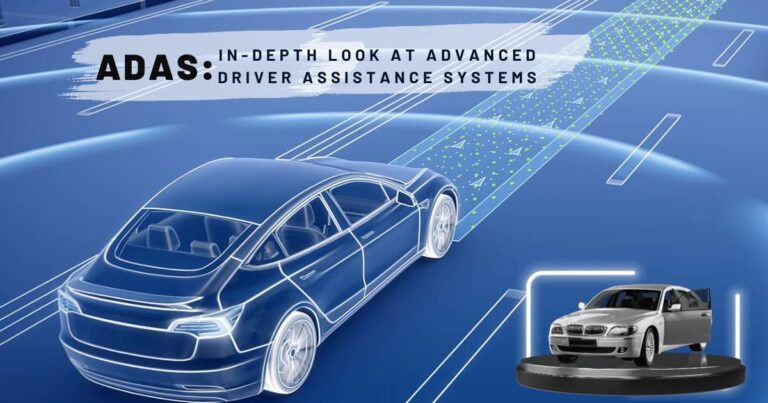Ignition Kill Switch vs Fuel Pump Kill Switch- Vehicle Safety Tips
Vehicle theft and unauthorized use continue to be significant concerns in many parts of the world. While the prevalence of vehicle theft can vary depending on factors such as geographical location, socio-economic conditions, and security measures in place, it remains a persistent problem in various communities.
To combat vehicle theft and unauthorized use, vehicle owners must take proactive measures to protect their vehicles. This includes utilizing security devices such as immobilizers, alarms, steering wheel locks, kill switches, among others. Among these measures are the ignition kill switch and fuel pump kill switch.
In this blog, we will compare and explore the features and functionality of ignition kill switches and fuel pump kill switches, providing insights into their effectiveness in enhancing vehicle security.
Overview of Vehicle Kill Switches
Vehicle kill switches, also known as anti-theft or immobilization devices, are security mechanisms designed to prevent unauthorized use or theft of vehicles. These switches disrupt the normal functioning of critical systems in a vehicle, rendering it inoperable without the proper authorization.
There are various types of vehicle kill switches available, each targeting different systems within the vehicle. Two commonly used kill switches are the ignition kill switch and the fuel pump kill switch. Other types of kill switches include battery kill switches, starter motor kill switches, and electronic control module kill switches.
Kill switches serve as effective deterrents against vehicle theft because they require knowledge of their existence and how to bypass them. When installed discreetly, they can significantly impede the efforts of thieves or unauthorized users who lack the necessary information or tools to deactivate the switch.
But while kill switches are valuable security measures, they should be used in conjunction with other anti-theft devices for maximum effectiveness. Common complementary security measures include steering wheel locks, alarms, GPS tracking systems, and vehicle immobilizers.
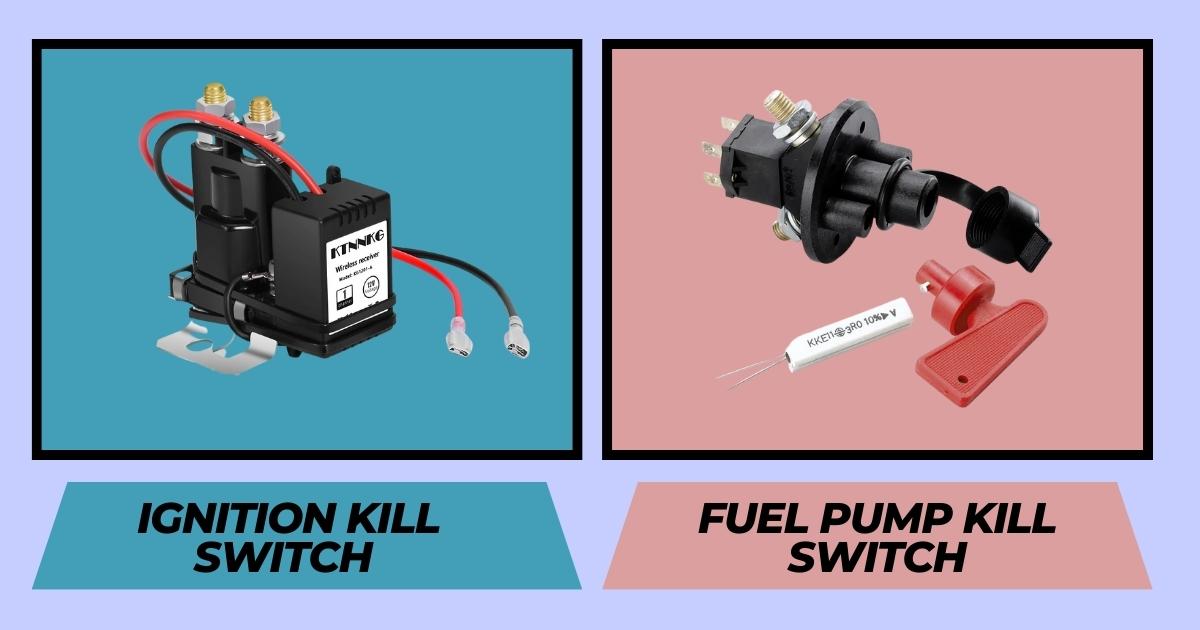
Ignition Kill Switch vs Fuel Pump Kill Switch
When it comes to protecting vehicles from theft and unauthorized use, ignition kill, and fuel pump kill switches are two popular anti-theft mechanisms. These security devices are designed to thwart car thieves by interrupting crucial systems in the vehicle. Without further ado, let’s explore the features and benefits of these anti-theft mechanisms in deterring car theft and unauthorized use.
What is an Ignition Kill Switch?
An ignition kill switch, also known as an engine kill switch or ignition cutoff switch, is a security device installed in a vehicle to prevent unauthorized use or theft. It is designed to interrupt the flow of electrical current to the vehicle’s ignition system, thereby disabling the engine from starting or running.
The ignition kill switch is typically installed in a discreet location within the vehicle and can be activated or deactivated by the owner using a hidden switch or button. When the kill switch is engaged, it breaks the electrical circuit responsible for supplying power to the ignition coil or ignition module.
By cutting off the power supply to the ignition system, the ignition kill switch prevents the generation of sparks needed to ignite the fuel-air mixture in the engine cylinders. As a result, even if a thief gains physical access to the vehicle and attempts to start it using a key or other means, the engine will not start without restoring the power through the kill switch.
Ignition kill switches are effective anti-theft devices because they introduce an additional layer of security that requires knowledge of the switch’s existence and its activation method. This makes it more difficult for unauthorized individuals to start or operate the vehicle, reducing the risk of theft.
Pros
- Theft prevention- The primary benefit of an ignition kill switch is that it provides an extra layer of security against vehicle theft. By interrupting the electrical circuit that starts the engine, it becomes extremely difficult for a thief to start the vehicle without the proper key or knowledge of the switch’s location.
- Low cost- Ignition kill switches are relatively inexpensive compared to other security devices. They provide an affordable option for enhancing vehicle security, especially when combined with other anti-theft measures.
- Customizable installation- An ignition kill switch can be installed in various discreet locations within the vehicle, making it difficult for potential thieves to locate and disable it. Furthermore, the flexibility of installation allows owners to choose a location that suits their preferences and enhances security.
- Ease of use-Ignition kill switches can be operated with a simple toggle switch, hidden button, or even through advanced technologies such as biometrics or smartphone control. The ease of use allows owners to quickly and conveniently activate or deactivate the kill switch as needed.
Cons
- Potential for user error- If the owner forgets to activate or deactivate the kill switch, it may result in inconvenience or even frustration when attempting to start the vehicle. This highlights the importance of maintaining awareness and remembering to engage or disengage the switch when necessary.
- False sense of security- While ignition kill switches provide an additional layer of protection, they are not foolproof. Determined and experienced thieves may still find ways to bypass or override the kill switch, especially if they possess advanced knowledge or hacking techniques.
What is a Fuel Pump Kill Switch?
In terms of theft prevention, a fuel pump kill switch, also known as a fuel cutoff switch or fuel pump cutoff switch, refers to an additional security measure that can be installed in a vehicle to thwart theft attempts. It works by cutting off the power supply to the fuel pump, which prevents the engine from starting and renders the vehicle inoperable.
Similar to the ignition kill switch, the fuel pump kill switch serves as an effective deterrent against vehicle theft. It introduces an additional layer of security by requiring knowledge of the switch’s existence and how to activate it. Without this knowledge, thieves or unauthorized users will be unable to start or operate the vehicle.
The fuel pump kill switch is typically connected to the electric fuel pump or fuel pump relay, which is responsible for delivering fuel from the gas tank to the engine’s combustion chamber. When the kill switch is activated, it breaks the circuit or cuts off power to the fuel pump, preventing it from operating.
By disrupting the fuel supply, the fuel pump kill switch deprives the engine of the necessary fuel to start and run. This renders the vehicle immobilized, even if an unauthorized individual gains access to the vehicle and attempts to start it using a key or other means.
Pros
- Theft deterrence- Much like an ignition kill switch, a fuel pump kill switch serves as an effective deterrent against vehicle theft. Installing a fuel cutoff switch for theft protection helps ensure that unauthorized individuals are unable to start or operate the vehicle unless the switch is deactivated.
- Preserves vehicle components- One unique advantage of a fuel pump kill switch is that it helps protect the vehicle’s fuel system components. It prevents unnecessary wear and tear on the fuel pump, fuel injectors, and other fuel system components. This can contribute to extending the lifespan of these parts and potentially reducing maintenance and repair costs in the long run.
- Difficult to bypass- Fuel pump kill switches are typically installed in discreet locations and require knowledge of their existence and activation method. This makes it challenging for thieves to locate and disable the switch, enhancing its effectiveness in preventing unauthorized use.
- Works with key-based ignitions- Unlike some other anti-theft devices, a fuel pump kill switch can be compatible with traditional key-based ignition systems. It can be easily integrated into the electrical circuitry of the fuel pump, making it a convenient option for vehicles without advanced electronic key systems.
Cons
- Installation complexity- Proper installation of a fuel pump kill switch requires knowledge of automotive electrical systems. If not installed correctly, it can lead to electrical issues, fuel system malfunctions, and potential damage to the vehicle. As such, it is always a good to seek professional assistance for installation.
- Fuel pressure drain-When the fuel pump kill switch is activated, the fuel pressure in the system gradually decreases over time. This can result in a delay or inconvenience when starting the vehicle after the switch has been deactivated, as the fuel system needs time to build up pressure again.
- Higher cost- The installation of a fuel pump kill switch involves additional components and wiring to interrupt the fuel supply. This can increase the overall cost of the security system.
Differences between Ignition and Fuel Kill Switches
Both ignition kill switches and fuel kill switches offer valuable security benefits for your vehicle. If you’re concerned about theft and unauthorized use, consider installing one of these kill switches to enhance your vehicle’s protection. That said, here are the key differences between the two security mechanisms;
Function and Operation
An ignition kill switch is designed to interrupt the power supply to the ignition system of a vehicle. It achieves this by breaking the electrical connection between the battery and the ignition components, such as the spark plugs, ignition coil, and distributor. By disabling the ignition system, the switch immobilizes the vehicle completely, preventing unauthorized individuals from starting or driving the vehicle.
On the other hand, fuel kill switches directly target the fuel system, making the vehicle unable to start or run without fuel. It achieves this by cutting off power to the fuel pump or fuel pump relay, which is responsible for supplying fuel to the engine’s combustion chamber. Without fuel, the combustion process cannot occur, resulting in the immobilization of the vehicle.
Compatibility
Ignition kill switches are generally compatible with a wide range of vehicle makes and models. They can be installed at various points within the vehicle’s ignition circuit, closer to the ignition components. This flexibility allows for easier integration into different types of vehicle systems.
Fuel kill switches may have more specific compatibility requirements due to variations in fuel system designs among different vehicles. The installation location is typically in the fuel pump circuit, which means the switch needs to be compatible with the specific fuel pump or fuel pump relay in your vehicle.
Installation
The installation of an ignition kill switch typically involves tapping into the ignition wiring or connecting to specific ignition-related components. However, professional installers or automotive technicians can guide you on the specific installation requirements for your vehicle.
The installation process for a fuel kill switch can be more involved compared to its ignition kill switch counterpart. It often requires access to the fuel pump or fuel pump relay and may involve additional wiring or components.
Cost
Ignition kill switches are generally more affordable compared to fuel kill switches. They typically involve simpler installation requirements and require fewer components. However, the cost can vary depending on the brand, quality, and complexity of the switch, but overall, they tend to be a more budget-friendly option.
On the other hand, fuel pump kill switches often require additional components and wiring, such as relays or wiring harnesses, to interrupt the fuel supply effectively. The installation process may also be more involved, which can contribute to higher labor costs if professional installation is required.
Conclusion
Investing in a vehicle kill switch allows you to take a proactive step towards protecting your vehicle and deterring potential thieves or unauthorized users. Both ignition kill switches and fuel kill switches offer valuable security measures to protect your vehicle from theft and unauthorized use. Whether you choose an ignition kill or a fuel switch, the added security and peace of mind it provides are invaluable.
Read More: Why Does My Gear Stick Move When I Accelerate?
When making a decision between ignition or fuel kill switches, you may want to consider factors such as the level of security desired, compatibility with your vehicle, installation requirements, and your budget estimations. However, it is essential to remain vigilant and employ a combination of security measures to effectively deter thieves and protect your vehicle.


